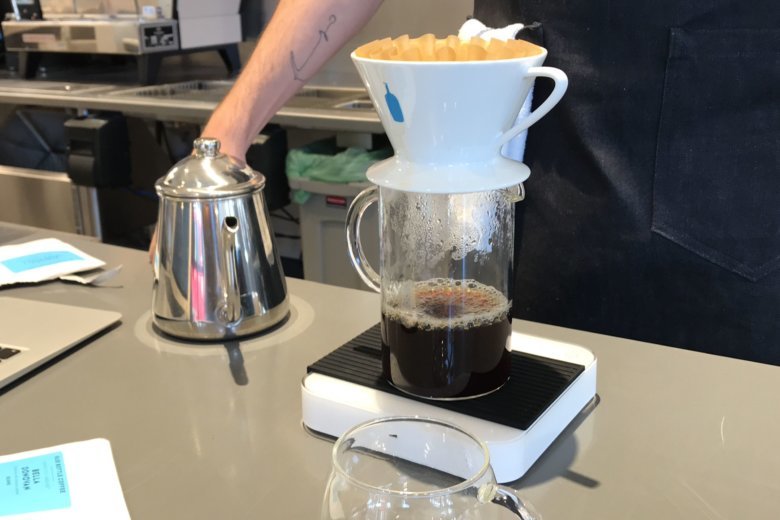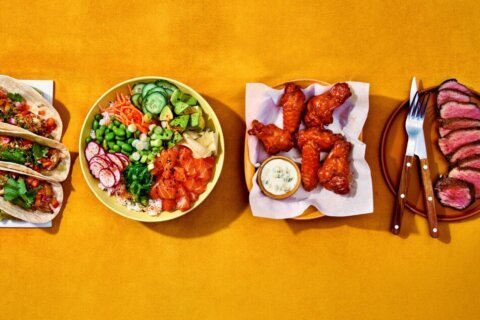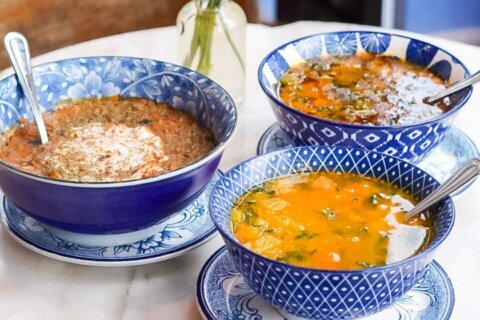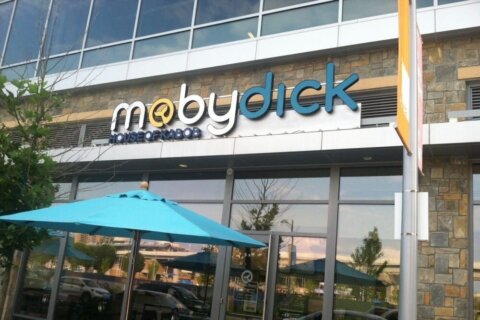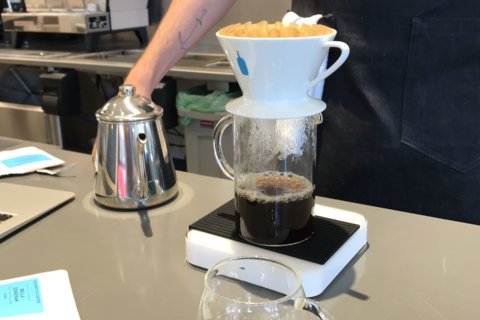
WASHINGTON — Making a cup of coffee can be as simple as filling a water tank and pressing a button. But at Blue Bottle Coffee, the process is more scientific.
There are formulas, scales and methodologies.
Blue Bottle made its way to the District last year, nearly 15 years after opening its first cafe in Oakland, California. And by the end of the summer, the West Coast company plans to have five D.C. locations, with more in the works.
New cafes mean new employees, and to make sure its East Coast brews stand up to its Bay Area reputation, Blue Bottle built a training lab inside its Union Market shop where employees learn the art of perfecting pour-overs, lattes, cappuccinos and cold brews.
“We really focus on training and development here. Every barista in every cafe is going to produce the same cup of coffee, regardless of where you go,” said Derek Henry, Blue Bottle’s Union Market cafe leader.

WTOP recently toured the D.C. coffee lab in an effort to learn a thing or two about making a better cup of Joe. After all, if there’s one thing that keeps a newsroom running, it’s coffee.
Produce a pour-over like a Blue Bottle barista
At Blue Bottle, consistency is key. That’s why baristas measure grounds, weigh the water and time each trial.
Ready to get started? Bring water to a boil and set up your pour-over equipment. You’ll need a digital scale, a coffee dripper, a carafe or cup, a filter and about 3 tbsp. of ground coffee. (Place the scale on the counter, the carafe on top of that, followed by the filter-lined dripper.)
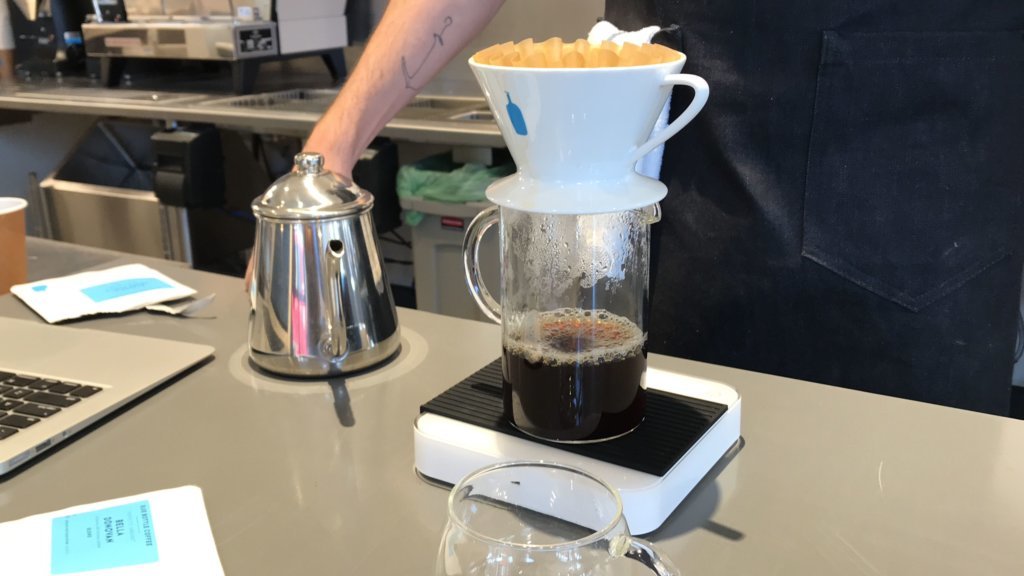
Add the grounds to the filter and set the scale to zero. Then, pour the hot water in a circular motion over the grounds until the scale reaches 60 grams and let it sit for about 30 seconds. This first step in the brewing process is called the “bloom.”
“It’s going to let a lot of great gases out and it’s going to start secreting some of those oils that will really help the coffee extract a little bit better,” Henry said.
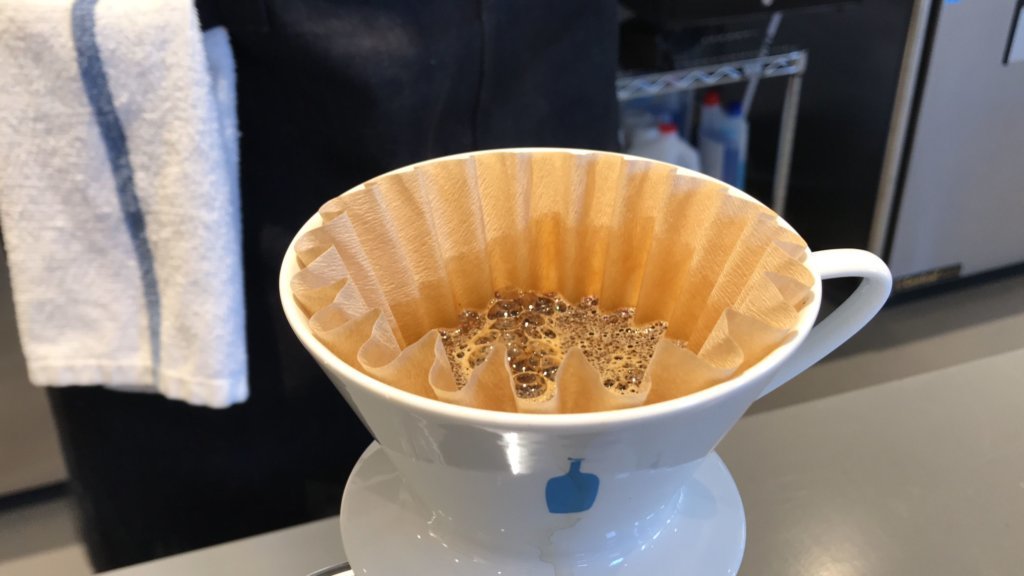
Repeat the pour — still moving in a circular motion — until the scale reads 150 grams. Then, take another quick break.
“Pouring in concentric circles really just ensures that all of the coffee is getting an even amount of water poured over it,” Henry said.
Follow the same step again until the scale reaches 250 grams and then 350 grams. Then, enjoy.
For now, the Union Market lab is used exclusively for employees (pour-over training, alone, takes a week, then there’s espresso, milk and latte art to learn), but Blue Bottle plans to open the space for public tastings, brew classes and coffee pairings in the future.
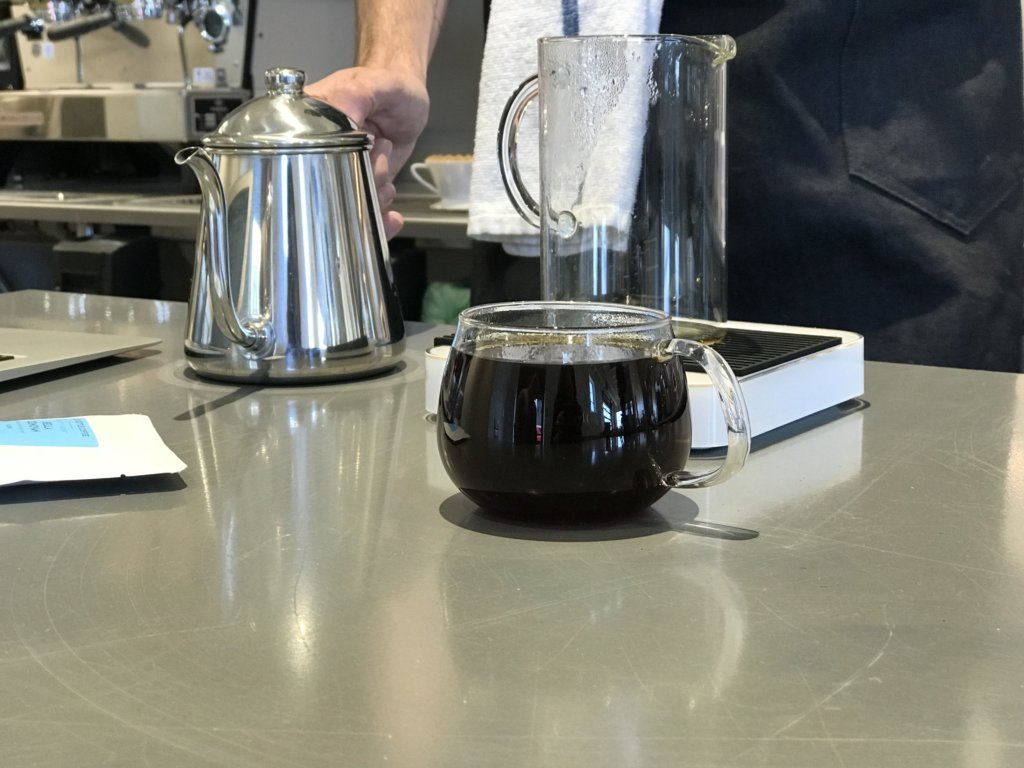
If you’d like to study up, you can reference Blue Bottle’s pour-over tutorial on the company’s website. You can also find guides for brewing with a French press, siphon, Chemex and more.

